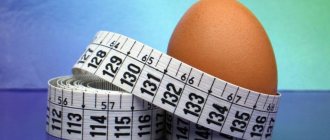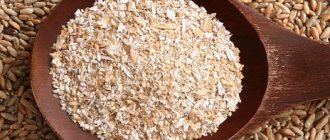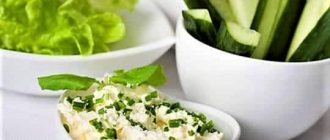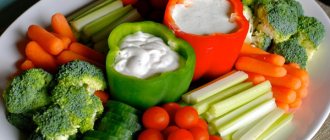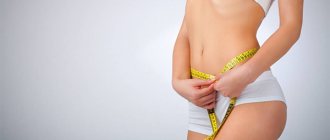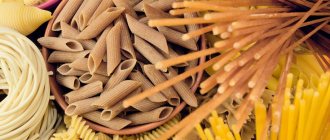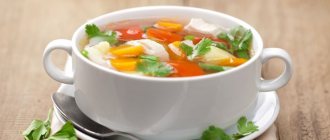The Dukan diet is recognized as one of the most effective today. She constantly receives positive reviews and has already helped a lot of people lose weight.
In 2021, it was included in the “Best Diets for Healthy Eating” rating. Founded by a famous nutritionist with 30 years of experience - Dr. Pierre Dukan, after whom it was named. It is based on a clearly organized approach to the process of losing weight and includes four stages: two - to lose weight (attack and alternation) and two - to not gain it back (consolidation and stabilization of weight for life).
The Dukan Diet diet is compiled in accordance with the list of permitted foods, and they can be consumed in any quantity necessary to satiate. The author provides a detailed description of each stage and important rules, the observance of which ensures guaranteed weight loss within the specified time frame.
The advantages of the presented diet are: uniform weight loss, weight loss, the ability to maintain weight after losing weight, a wide selection of products, absence of hunger, eating at any time, even at night, which is attractive in losing weight. Surprisingly, by eating bread, meat, cheese, and pastries, people following a diet lose weight.
At all phases of the diet, the following rules must be observed:
- Drink at least 1.5 liters. still water (you can also drink green tea, rosehip infusion, kefir, herbal tea and coffee);
- Be sure to consume oat bran daily - 1.5-3 tbsp. spoons, washed down with water (constipation often occurs, bran is offered as a means of prevention).
- Daily walks in the fresh air;
- Do gymnastics every morning. In the future, more serious and complex loads should be connected;
- Take vitamin supplements (this is especially important in the first two phases);
- Instead of sugar, use a sweetener, and reduce the amount of salt and spices in the diet to a minimum.
Addition: examples of dishes for the diet
When creating a menu for the week, you can create various combinations of food elements for a balanced diet.
Here are a few diet foods and drinks to choose from that you can use in the weight loss process at the first stage:
- For breakfast: omelet with pieces of meat and coffee, cottage cheese, scrambled eggs, cheesecakes;
- For lunch: cod fish soup and bran bread, meat soup, cutlets and yogurt;
- Afternoon snack: cottage cheese, kefir, yogurt;
- Dinner: baked meat and light tea, stewed fish, baked chicken fillet.
The “Alternation” phase allows for a larger list of components allowed in food, which affects the diet recipe:
- Breakfast: boiled eggs, yogurt, tea, coffee without sugar, boiled chicken;
- Lunch: vegetable soup, zucchini puree, pumpkin soup, cucumber salad;
- Dinner: chicken, fish fillet, fried beef liver.
During “Stabilization” and “Fixation” the following dishes can be included in the menu:
- Breakfast: muffin, rye flatbread, kefir, cottage cheese;
- Lunch: stuffed peppers, tuna salad, chicken meatballs;
- Dinner: fried beef, chicken with vegetables, pasta with mushrooms.
By observing all the principles and limitations of the developed Dukan method, the desired effect is achieved in the form of lost kilograms. And for this there is absolutely no need to starve, because a harmonious combination of normalized nutrition and the process of losing weight is formed.
Advantages and disadvantages
The Dukan diet has a number of benefits:
- ensures rapid loss of body fat, especially at the initial stage, which significantly increases motivation;
- allows you to eat healthy and healthy food;
- makes it possible to adhere to a set diet not only at home, but also at work or while traveling;
- does not require calorie counting, does not impose restrictions on portion sizes and meal times.
Disadvantages of the Dukan Diet:
- an excess of protein in the diet, which creates an increased load on all organs, especially the kidneys, liver, blood vessels, and also leads to increased cholesterol in the blood;
- insufficient amount of fiber, which leads to constipation, intestinal microflora disorders and other gastrointestinal problems.
- in order to reduce the harmful effects, throughout the diet it is necessary to consume a sufficient amount of water, which will remove the remnants of protein breakdown from the body, as well as vitamin and mineral complexes to maintain it. In addition, it is very important to observe contraindications for each stage of the diet.
The disadvantages of the Dukan system can be significant if you do not follow all the author’s recommendations and use it without permission. Dr. Dukan clearly points out that you need to switch to the proposed diet plan only under the supervision of a nutritionist, which is due to the excess intake of animal proteins in the body. This is fraught with serious complications, primarily a violation of carbohydrate metabolism - ketoacedosis, which occurs due to insulin deficiency. If such deviations are not detected in a timely manner through routine tests, irreparable changes may occur in the body.
The Dukan diet is protein-rich and involves consuming a very large amount of protein, which puts a huge strain on the liver, kidneys, and blood vessels. Therefore, if there is even the slightest disturbance in the functioning of these organs, it is necessary to abandon this technique.
Benefits of the Pierre Dukan Diet
The Pierre Dukan diet, like any diet associated with restrictions on the consumption of certain foods, has both advantages and disadvantages.
Of the advantages, one can note, of course, first of all, the stable loss of extra pounds by reducing the consumption of carbohydrates and fats. Even if a person has previously subjected his body to a large number of experiments and adhered to various diets, the Dukan method can destroy the body’s immunity to food restrictions.
Unlike mono-diets, the diet developed by the French nutritionist is quite varied. At the same time, you don't have to spend a lot of time cooking or looking for special products. There are no restrictions on the size of portions and the amount of food consumed, you can eat as much as you want, whenever you want.
Getting into the diet
To reduce possible risks, you must enter the Dukan nutrition system gradually:
- in two weeks, reduce the amount of sugar and salt consumed, since in the first phase “Attack” you will have to completely abandon them (if this is too difficult, you can use a high-quality sweetener and soy sauce, respectively);
- gradually begin to replace wheat bread and baked goods with bran cakes or other similar products;
- reconsider your drinking regime, increasing the amount of liquid you drink per day to 1.5–2 liters.
It should also be taken into account that the proposed method requires certain financial costs for the purchase of fresh and high-quality meat, fish, and other products that are mandatory for inclusion in the diet.
Sample menu for the week
It is necessary to take a responsible approach to the initial period of weight loss - the Attack phase, follow the menu, eating only dishes prepared from permitted products.
Then the result will not be long in coming and moving on to the next stage of weight loss will be much easier. Don't miss useful videos about the initial stages of weight loss, its principles and results.
Stages of the Dukan Diet
The diet includes 4 stages, each of which has its own differences and is performed only after the previous one is completed:
Stage 1 – “Attack”, the shortest in duration, is designed to activate metabolism and quickly start the weight loss process;
Stage 2 – “Alternation” (“Cruise”), the main phase during which direct weight loss occurs;
Stage 3 – “Consolidation” (“Consolidation”), a period of adaptation of the body to a new state and the recommended nutritional system, during which the result obtained is consolidated;
Stage 4 – “Stabilization”, the final phase of the diet, which is recommended to be followed throughout your life in order to maintain the achieved results.
Only by following a clear plan, observing the sequence and duration of all stages of the diet, can you achieve the desired result without harm to health.
Pros of the third stage
Pierre Dukan is appreciated precisely because the process of “exiting” a grueling diet is carefully thought out. Dukan not only described a menu that will ensure the loss of kilograms, he made sure that you could adapt to new eating habits painlessly and as comfortably as possible. The main thing is that if you follow all the recommendations of Dukan, the kilograms lost at the cost of enormous efforts and restrictions will not return. The Dukan diet helps not only to quickly lose weight, but also to learn to think differently about food and choose the right foods.
Duration of the stage
First, you need to calculate the duration of the “Consolidation” stage. To do this, multiply the number of kilograms lost by ten. Let's say you lost 10 kilograms. In this case, the “Consolidation” stage will last 100 days. The menu for the first 50 days differs from the menu for the second part of “Finding”.
Stage No. 1 “ATTACK”
The Dukan diet begins with the shortest stage - “Attack”, during which you are allowed to eat only protein. Due to too much protein load on the body, this period is limited in duration and, depending on the amount of extra pounds, the average is:
- for excess weight up to 5 kg – 1–2 days;
- 5–10 kg – 2–3 days;
- 10–20 kg – 3–5 days;
- 20–30 kg – 5–7 days;
- if you need to lose 30 kg or more in 7–10 days.
At the first stage of the diet, you must adhere to the following rules:
- Eat only protein foods.
- All products can be boiled, stewed, cooked in a slow cooker, baked, but without using oil.
- Reduce, or better yet, completely eliminate salt, replacing it with spices, herbs, and lemon juice.
- Drink at least 2 liters. water per day, including tea and coffee.
- Eat 1.5 tbsp. l. oat bran per day (if intolerant, you can replace them with the same amount of dry ground buckwheat).
To make the most of the “Attack” phase, it is recommended to follow several recommendations from Dr. Dukan, which will help the body react less stressfully to a new diet.
It is advisable to start the first stage while on vacation or before the weekend. This is due to the fact that at “Attack” many products are excluded from the menu, in particular those containing glucose. In most cases, this negatively affects well-being and performance; weakness, headaches, lethargy, bad breath, and the smell of acetone from the body may appear. Such symptoms are associated with glucose deficiency and the active breakdown of one’s own fat deposits, the remains of which give off an unpleasant odor. However, within 2-3 days these signs disappear. But during this most difficult period of the diet, it is better to stay at home.
To speed up the process of fat burning and removal of residual decay products, daily walks for half an hour are necessary. This rule must be followed during all phases of the Dukakna diet, but is especially important during the “Attack”. In addition, being in the fresh air improves your well-being and speeds up adaptation to a new diet. Drinking plenty of fluids also provides a similar effect.
At the first stage, meals should be frequent and in small portions, although there are no restrictions on the amount eaten. But at the same time it is necessary to eat only approved foods.
Authorized Products
The diet on the “Attack” can be made up of the following products:
- Meat. Beef tenderloin and lean fillet. It is allowed to eat rabbit meat and beef by-products: tongue, kidneys, liver. Chicken, turkey and pork can be consumed in the form of lean ham. The diet may include chicken liver, as well as lean poultry meat: quail, pigeon, guinea fowl, ostrich, cockerel.
- Fish. Fatty fish can also be consumed, since the composition of its fat is radically different from that of the animal. Include mackerel, cod, hake, saury, herring, flounder, blue whiting, halibut, and sea bream in your diet. Eat both small fish, such as sprat or sardine, and large river or sea fish: burbot, catfish, mullet, pike, trout, carp, sturgeon, tuna, salmon.
- Seafood. Eat crab meat, squid, and shrimp without restrictions. Include scallops, oysters, mussels, crayfish, lobsters, lobsters, and cuttlefish in your diet.
- Eggs. Eat up to two chicken or quail eggs daily. With high cholesterol, the number of yolks per week should be up to four.
- Dairy products. Homemade dairy products with high fat content are excluded. Your diet can only include completely skim milk, kefir, yogurt, cottage cheese, and curd cheeses.
You can eat without restrictions, at any time, but only protein foods.
Prohibited: sugar (except sweeteners), ketchup, any oil, alcohol and all other products containing carbohydrates and fats.
Sample menu for 7 days (option 1) Day 1 Breakfast: 2 boiled eggs Lunch: turkey meatballs + ginger tea Afternoon snack: slice of citrus pie Dinner: steamed fish
Day 2 Breakfast: steamed cheesecakes + herbal tea Lunch: chicken soup Afternoon snack: natural Greek yogurt Dinner: boiled shrimp + kefir
Important! Fermented milk and dairy products should be low-fat.
Day 3 Breakfast: sweet cottage cheese Lunch: stewed chicken liver Afternoon snack: 2 oatmeal cookies Dinner: a piece of baked turkey + chamomile tea
Day 4 Breakfast: oat bran porridge with milk Lunch: chicken baked with herbs Afternoon snack: dietary jelly Dinner: boiled fish + glass of kefir
Day 5 Breakfast: cottage cheese casserole + chamomile tea Lunch: fish soup Afternoon snack: boiled egg Dinner: turkey cutlets
Day 6 Breakfast: scrambled eggs with ham Lunch: fish casserole Afternoon snack: natural Greek yogurt Dinner: meat soufflé
Day 7 Breakfast: quail eggs Lunch: canned fish soup Afternoon snack: dietary jelly Dinner: steamed chicken cutlets
Sample menu for 7 days (option 2)
Day 1 Breakfast: Low-fat cottage cheese casserole and unsweetened tea Lunch: Fish soup, oat bran Afternoon snack: Fruit Dinner: Meat baked in the oven with vegetables, potatoes
Day 2 Breakfast: Coffee without sugar and cheesecakes made from low-fat cottage cheese Lunch: Solyanka with bread Afternoon snack: Light vegetable salad Dinner: Vegetable salad and chicken meatballs
Day 3 Breakfast: Casserole with berries and low-fat cottage cheese Lunch: Fish soup Afternoon snack: Fruit Dinner: Lean meat baked in the oven and kefir
Day 4 Breakfast: Low-fat cottage cheese and yogurt Lunch: Rice pilaf with vegetables Afternoon snack: Low-fat yogurt with bran Dinner: Cutlets with oat bran
Day 5 Breakfast: Scrambled eggs and unsweetened coffee Lunch: Veal meatballs and vegetable salad Afternoon snack: Berries Dinner: Oven-baked fish and vegetable stew
Day 6 Breakfast: Scrambled eggs with bran Lunch: Solyanka Afternoon snack: Fruit Dinner: Baked meat, light vegetable salad and rice
Day 7 Breakfast: Boiled eggs and unsweetened coffee Lunch: Light salad and turkey cutlets Afternoon snack: Fruits Dinner: Fish with vegetables
Stabilization Phase
The Stabilization phase of the Dukan diet is the rules of eating behavior that must be followed throughout life in order to maintain the achieved weight loss result and not gain excess weight in the future.
According to the Dukan diet, you should adhere to the main 4 principles in the “Stabilization” phase:
- Consume 3 tablespoons of oat bran and drink at least 1.5-2 liters of still water per day;
- Pay special attention to your physical activity: avoid elevators, take daily walks for at least 30 minutes, do morning exercises, do fitness;
- Once a week, arrange a protein fasting day according to the “Attack” phase;
- Include all foods in your daily diet or eat according to the “Consolidation” phase. It is advisable to eat fruits in the menu in the first half of the day.
According to the Dukan diet, the “Stabilization” stage is no longer a restriction, but a way of life. There is no need to worry about holidays when you want to enjoy culinary delights, because on this day you can indulge in a “feast”. The day after the “belly feast,” you should definitely do a protein “Attack” to avoid gaining excess weight.
Permitted and prohibited products
Allowed products according to the Dukan system during the Stabilization phase:
- Lean meats (beef, veal, horse meat, pork 6%, rabbit);
- Poultry: chicken, turkey (without skin);
- All varieties of fish in any variations of preparation;
- Low-fat dairy and fermented milk products;
- Seafood;
- By-products;
- Lean ham without skin;
- Chicken and quail eggs;
- All vegetables (potatoes and legumes should be included in the menu no more than 2 times a week);
- It is advisable to consume fruits (with the exception of cherries, bananas and grapes) in the first half of the day;
- Honey 3 teaspoons per day;
- Bread (2 slices per day), pasta;
- Lemon, lemon juice;
- Cocoa;
- Mushrooms;
- Ketchup, tomato paste (2 tablespoons per day), adjika;
- Spices and additives (parsley, coriander, ginger, cumin, pepper);
- Gelatin, baking powder, yeast;
- Vegetable, olive oil;
- Tea, coffee, infusions and herbal decoctions without sugar.
Prohibited foods in the “Stabilization” phase of the Dukan diet:
- Sugar;
- Baked goods, sweet desserts;
- Sweet fruits: cherries, bananas, grapes;
- Fatty meat and poultry (duck, goose in limited quantities);
- Fatty dairy and fermented milk products;
- Mayonnaise and sauces using it in preparation.
Menu
Menu for the Stabilization phase of the Dukan diet (breakfast, lunch, afternoon snack, dinner): Monday:
- Curd pudding;
- Norwegian salmon soup;
- Grapefruit;
- Vegetable stew with turkey.
Tuesday:
- Omelette. Mandarin;
- Rassolnik. Cod liver;
- Kefir;
- Mashed potatoes. Lightly salted herring. Cabbage salad.
Wednesday:
- Rice porridge with milk;
- Solyanka from selected meat;
- Ham;
- Gefilte fish. A fresh vegetable salad.
Thursday:
- Soft-boiled egg. Pear;
- Mixed fish soup;
- Kefir;
- Beef steak with mustard.
Friday:
- Muesli. Orange;
- Okroshka. Hake fillet;
- Kefir;
- Spaghetti with Bolognese sauce.
Saturday:
- Oatmeal. Apple;
- “Feast” - we eat whatever we want according to the Dukan diet;
- Ham;
- The vinaigrette. Pollock fillet.
Sunday:
- Syrniki;
- Borscht with meat;
- Grapefruit;
- Chicken breast. Green beans in creamy sauce.
Stage No. 2 “ALTERNATION” (“CRUISE”)
One of the most important stages of the Dukan diet. Reviews about it are quite contradictory. The fact is that you will have to change many already established eating habits.
At this stage, Dr. Dukan recommends alternating protein (protein) days with protein-vegetable days, when carbohydrates are allowed. Alternation continues as long as it takes to achieve the required weight. Just like the Attack, the pattern depends on how much weight you need to lose.
Up to 10 kg - protein days and protein-vegetable days alternate in the sequence 1:1, 2:2 or 3:3. If you have more excess weight, you will have to alternate days - 5:5. However, Dr. Dukan recommends resorting to the 5:5 scheme only in exceptional cases and under the supervision of a doctor, because this scheme is quite difficult for the body. The most effective and at the same time safe scheme is considered to be 1:1 or, in extreme cases, 2:2.
On so-called protein-vegetable days, you can eat not all vegetables, but only those that are included in the list below:
- tomatoes, cucumbers, radishes, peppers;
- asparagus, green beans;
- pumpkin, eggplant, zucchini;
- all types of cabbage;
- mushrooms;
- celery, spinach, lettuce, fennel.
- Carrots and beets can be consumed, but in a limited manner, since they contain sugar.
All starchy vegetables are prohibited at this time. These are all legumes, potatoes, corn, avocados, artichokes. Likewise, all cereals and grains are prohibited. There is no such thing as low-calorie fat, so any oil, including olive oil, should also not be consumed.
Vegetables can be eaten raw, as well as baked and boiled. You can stew vegetables in fish or meat broth. But from the point of view of preserving vitamins, the best choice would be to steam vegetables, as well as prepare all kinds of salads.
Since the feeling of hunger on the Cruise is much less than at the beginning of the Attack, the amount of food you eat will begin to noticeably decrease. Don't make the big mistake of skipping protein foods on days when carbohydrates are allowed.
Every day on Alternation you can add 2 products from the following list to your diet:
- soy cream – 2 tbsp. spoons
- cream 3-4% – 1 teaspoon
- vegetable oil - a few drops on a napkin for wiping a Teflon frying pan before frying food
- low-fat cheese (10%) – 20 g.
- dry wine – 80 g.
You are also allowed to eat: gelatin, agar-agar, garlic, seaweed, gherkins, soy sauce, mustard, vinegar and adjika, any spices, sugar substitutes, tofu, skimmed milk powder. You can treat yourself to crab sticks, but no more than eight pieces a day, as they contain starch.
Unlike protein products, the consumption of which is not limited, you can only eat a limited amount of vegetables even on a protein-vegetable day. Eat only until your hunger is satisfied and not a bite more. Vegetable salad in excess can ruin all your intentions to lose weight if there is too much of it.
To dress salads, use homemade dressings based on yogurt, kefir and balsamic vinegar with the addition of mustard, spices and dry or fresh aromatic herbs.
Under no circumstances should you season your salads with oil, sour cream, or, especially, mayonnaise!
At the Alternation stage, eat oat bran in an amount of 2 tbsp. spoons a day. Bran should be part of the diet on both protein and protein-vegetable days.
Weight loss on Alternation is slower than on Attack, since you will only lose weight on protein days. However, losing weight will be sustainable and safe for your health. Under no circumstances try to speed up the process by changing the ratio of protein and protein-vegetable days, this is dangerous. The greatest weight loss occurs during the first 2 months of the Cruise; in the future, this process will gradually slow down. On average, weight loss is about 1 kg. in Week.
The Alternating phase continues until you reach your desired weight.
SAMPLE MENU FOR A PROTEIN DAY: Breakfast: omelet from the whites of 2-3 eggs, skim milk and greens. A piece of lightly salted salmon, tea or coffee; Second breakfast: 2 tablespoons of oat bran, yogurt; Lunch: boiled beef or veal without fat, baked chicken with garlic, lemon and rosemary; Afternoon snack: boiled shrimp with turmeric and chili dressing; Dinner: salmon steak, seafood, lamb or lamb, low-fat kefir.
SAMPLE MENU FOR A MIXED (PROTEIN AND VEGETABLE) DAY: Breakfast: zucchini pancakes with grated carrots; omelette with onion, tomato and sweet pepper; low-fat cottage cheese; Second breakfast: yogurt, fruit; Lunch: steamed tuna or other lean fish, stewed vegetables or vegetable soup (no potatoes), tea or coffee; Afternoon snack: fresh vegetable salad (cabbage, spinach, asparagus, bell peppers, celery, cucumbers, radishes, tomatoes, etc.), yogurt; Dinner: boiled or grilled beef; stewed cabbage with cumin and dill; eggplants and tomatoes.
Menu for the week
Day 1 Breakfast: Pancakes with lemon zest Lunch: Turkey cutlets, low-fat yogurt Afternoon snack: Chicken eggs stuffed with homemade mayonnaise Dinner: Grilled chicken with spices
Day 2 Breakfast: Egg omelet with ham and croutons Lunch: Chicken soup Afternoon snack: Caesar salad with chicken fillet, hard cheese and celery stalk Dinner: Zucchini spaghetti; chicken fillet
Day 3 Breakfast: Cheesecakes made from low-fat cottage cheese and oat bran; scrambled eggs Lunch: Egg broth with croutons; chicken roll Afternoon snack: Sandwiches made from cottage cheese and homemade yeast bread made from oat bran; Rosehip infusion Dinner: Chicken fillet in yogurt sauce
Day 4 Breakfast: Pancakes; oatmeal Lunch: Beans in tomato sauce; baked vegetables Afternoon snack: Vegetable salad; 1 slice of bread Dinner: Chicken fillet with green beans and mushrooms
Day 5 Breakfast: Omelette with soft cottage cheese and ham Lunch: Steamed chicken cutlets; trout soup Afternoon snack: Low-fat cottage cheese with sugar substitute and yogurt Dinner: Shirataki noodles; meat goulash
Day 6 Breakfast: Oat bran pancake with low-fat cottage cheese Lunch: Vegetable summer salad; baked chicken breast Afternoon snack: Milk cocktail with proteins Dinner: Meat with stewed vegetables
Day 7 Breakfast: Egg omelet; boiled chicken Lunch: Chicken soup with shirataki Afternoon snack: Toast with cottage cheese; Rose hip decoction Dinner: Fish baked in foil with spices
What diet do you eat during the “Attack” phase?
Exclusively protein, but this is only the general name of the nutrient. In his book, the author of the diet lists and describes about 72 types of foods containing protein. The main ones include the following:
- Chicken, turkey and beef meat. rabbit and veal . It is extremely low-fat, so you should avoid lamb and pork and remove the skin from poultry.
- Meat by-products and products . You can eat tongue, liver, lean ham, kidneys.
- Fish and canned food . The semi-finished product should be consumed without oil, and the fish should be consumed both fresh and smoked.
- Seafood. You can eat various shellfish and crustaceans.
- Eggs. There are no restrictions regarding the amount of protein consumed, but yolks should be limited to 1-2 per day and less if cholesterol is low.
- Unsweetened and low-fat dairy products. Curd and processed cheeses are allowed, but the rest are prohibited.
This list represents approved products. They can be used in unlimited quantities. There are also those products that are allowed only in minimal quantities. It is necessary to limit the consumption of greens, various sauces, including tomato, soy and mustard, lemons, olive oil, and bran must be eaten, but a maximum of 2 tablespoons per day.
A special place is given to drinking. Unsweetened, non-alcoholic, non-carbonated drinks are considered permitted. You must avoid juices in any form. The author of the weight loss technique recommends drinking a decoction made from Goji berries, plain water without any impurities, and green tea.
Stage No. 3 “CONSolidation” (“CONSOLIDATION”)
The third stage of the Dukan diet, aimed at consolidating the results obtained, is psychologically the most difficult phase. The reduction in body weight to the planned level has already been achieved, so dietary restrictions seem unnecessary to many. But if you break the rules of the program now, then all previous efforts will be in vain, and the lost kilograms will return.
The duration of the “Consolidation” stage is set depending on the number of kilograms lost - 10 days for each. So, when losing 30 kg, you need to stay at this stage for 10 months (300 days). An added bonus is that during this phase the weight continues to decrease by about 1 kg. in Week.
Basic Rules:
The process of alternating protein and vegetable products is complete. You can consume them every day. Together and separately, according to your wishes, in any combination.
1 day a week should remain protein, without adding any carbohydrate-containing foods.
During Consolidation, you must accustom your body to moderate consumption of foods that were previously forbidden to you. First of all, these are fruits, honey, starchy vegetables, grains and fats.
Some fruits appear in your daily diet in the amount of 1 serving per day, 2 pieces of wholemeal bread, hard cheeses, 1 table. a spoonful of honey, some cereals and 2 servings of starchy vegetables per week. The most important thing is to remain prudent and not follow the lead of your body, which requires a much larger supply of new products than you are ready to offer it.
The safest starchy foods for you are potatoes, rice, corn, lentils and whole wheat. Potatoes are best eaten baked with their skins on; in this form, they retain the most amount of potassium you need.
Wheat is best consumed as a processed grain: couscous and bulgur are the best choices. Any pasta is also perfect for Consolidation. Corn is also preferable in the form of grits or flour; prepare Mediterranean polenta. Rice is best eaten slightly undercooked to retain its firmness; Slow-digesting varieties like basmati, wild rice and brown rice are your best bet.
Lentils, and subsequently other legumes (peas, beans, chickpeas) always take a long time to digest, keep this in mind when creating a menu.
All starchy vegetables and cereals should be cooked without oil. The serving size should not exceed 220 g. They will be digested very well with onions, fresh tomatoes and spices.
Protein products should also be replenished with new types of meat. First of all, this is a regular pork ham. Also include roast pork and ham of lamb in your diet. But the basis of your diet should still remain the well-known low-fat protein products.
The serving of oat bran is also increased to 2.5 tablespoons. spoons a day.
And finally, the main feature of the Consolidation stage. You should regularly arrange a “belly celebration” for yourself. In the first half of this long stage, the festive meal should take place once a week, in the second half - 2 times.
A “belly feast” is one meal at lunch or in the evening, but preferably dinner. During this meal, you can eat absolutely any food, especially the one that you missed so much during the diet.
The festive meal consists of 1 first, 1 second course, dessert, aperitif and wine - all in the usual quantities. It is strictly prohibited to place additives on the plate. The purpose of this holiday is biological pleasure, which your body has been deprived of for a long time, but which it really needs. Your task during the holiday meal is to enjoy the taste and feel a feeling of satiety. To stop striving to regain lost kilograms, the body must understand that you are not infringing on it in any way.
The weekly menu for the “Consolidation” stage can be compiled at your own discretion or use the example below.
Monday (protein-vegetable): breakfast – pancakes with meat filling, tea; lunch – scrambled eggs with vegetables; lunch – chops with cauliflower, vegetable salad; afternoon snack – cottage cheese pie; dinner - zucchini pie with mushrooms and meat; second dinner – kefir-beetroot cocktail.
Tuesday (Festive meal): breakfast – omelet with vegetables, coffee; lunch - milk sausages; lunch - any dishes at your discretion, wine; afternoon snack – liver cake with carrot and cheese filling; dinner - homemade sausage; second dinner - Olivier salad.
Wednesday (protein-vegetable day): breakfast – soft-boiled eggs, coffee with milk; lunch – vegetable salad, mushrooms; lunch – chicken soup with mushrooms, vegetable stew, kefir; afternoon snack – bran muffins, herbal infusion; dinner - liver cutlets, cabbage salad, tea; second dinner - seaweed, yogurt.
Thursday (protein): breakfast – cottage cheese casserole; lunch - fish cutlets; lunch – chicken sausage; afternoon snack - kefir; dinner - stew; second dinner - curd mousse.
Friday (protein and vegetable day): breakfast – omelet with ham, coffee with milk; lunch – pumpkin porridge in a slow cooker; lunch – chicken bread (roll); afternoon snack – eggplant fan; dinner – chicken bread (roll); second dinner - cheesecake.
Saturday (protein and vegetables, with carbohydrates): breakfast – liver pancakes, tea; lunch - vegetable stew; lunch – Finnish cream soup, fish cakes; afternoon snack – squash caviar; dinner – baked breast, sauerkraut; second dinner - yogurt.
Sunday (protein-vegetable day): breakfast - cottage cheese, coffee without sugar (with sweetener); lunch – squash caviar, yogurt; lunch - soup, vegetable stew, herbal infusion; afternoon snack – boiled breast, tea; dinner – cabbage salad, scrambled eggs; second dinner - fermented baked milk.
The “Consolidation” stage is the simplest in terms of menu creation. To prepare dishes, you can take the recipes of the two previous phases, and also use additional recipes suitable for the diet, starting from phase 3, on those days when the consumption of carbohydrates is allowed.
Consolidation phase of the Dukan diet: list of products and conditions
The duration of the phase depends on the amount of weight lost: for every 500 g - 5 days of consolidation .
The lists for vegetables and proteins remain the same:
- Lean meat of any kind, but skinless chicken. Duck, pork, lard, bacon and boiled pork, and semi-finished products are prohibited.
- Low fat dairy products.
- Plant protein in the form of tofu from soy gluten, seitan from wheat gluten.
- Vegetables with a low glycemic index: salads, tomatoes, cucumbers, cabbage, eggplants. Potatoes, carrots, beets and legumes are prohibited.
- Spices and seasonings, except store-bought sauces and mustard.
Stage No. 4 “STABILIZATION”
The last stage of the Dukan diet is no less important than all the others. The correct weight has already been achieved and fixed, but it is the “Stabilization” phase that will allow you to maintain it for the rest of your life.
General rules
There are much fewer rules and recommendations here, and they are quite simple and do not require much effort. To maintain your correct body weight, you must:
- Never overeat, eat only until you are slightly full.
- Every day use 3 tbsp. l. oat bran
- Monitor your daily fluid intake - drink at least 2 liters.
- Have one pure protein day every week
- Lead an active lifestyle - walk, avoid the elevator, move more.
Authorized Products
There are already quite a few prohibited foods at this stage of weight loss, and their absence is tolerated quite calmly. First of all, these are sugar and fructose. By the beginning of “Stabilization,” the body has weaned itself off sweets and there is simply no need to accustom it to it again.
When choosing permitted dishes, you must follow the following rules:
- vegetables can be consumed in any quantity;
- fruits – once a day, one serving (for example, one apple, one persimmon or two plums);
- cheeses – hard varieties of low fat content, excluding goat and blue cheeses;
- meat - lean types;
- poultry - without skin, preferably sirloin;
- dairy products – low-fat and low-lactose;
- salt - in limited quantities;
- bread – rye, whole grain, no more than 100 g;
- starchy foods - no more than two per day;
- The daily norm of bran is 3 tbsp. l.
The “Stabilization” phase is an example of a balanced diet, the basis of which is food rich in proteins, fiber and complex carbohydrates.
A sample menu for this phase of the diet is as follows:
Day 1: breakfast – a slice of whole grain bread with cottage cheese, coffee with milk; lunch - broth with noodles, cutlets; afternoon snack – apple-curd pancakes, fermented baked milk with bran; dinner - fish with vegetables, baked under a cheese crust.
Day 2: breakfast – omelet with slices of tomatoes, tea; lunch – mushroom soup, whole grain bread; afternoon snack - nalistniki with curd filling and fruit sauce, yoghurt with bran; dinner – shrimp with soy sauce, herbal infusion.
Day 3: breakfast – oatmeal, coffee with milk; lunch – green borscht, boiled breast, Greek salad; afternoon snack – a portion of liver pie, tea; dinner - veal meatballs, kefir with bran.
Day 4: breakfast – cottage cheese casserole, coffee with milk; lunch - veal cutlets; afternoon snack – kefir with bran; dinner – chicken soufflé.
Day 5: breakfast – omelet, cheese, tea; lunch - onion soup, chops, fruit; afternoon snack – cottage cheese, kefir with bran; dinner – fish baked with vegetables, tea.
Day 6: breakfast – cottage cheese with fruit, green tea; lunch - puree soup, chicken nuggets, whole grain bread; afternoon snack – zucchini pancakes, kefir with bran; dinner - mussels.
Day 7: breakfast – chocolate muffin, cheese, coffee; lunch - chicken broth, egg, whole grain bread; afternoon snack - cottage cheese, kefir with bran; dinner - fish casserole.
If all the previous phases of the Dukan diet were completed correctly, then at stage 4 the body has already adjusted to a new mode of operation, actively breaks down calories, does not create fat reserves, and fully absorbs nutrients.
During the “Stabilization” phase, there is a transition to a healthy diet and complete elimination of bad eating habits: the tendency to overeat, stress eating, etc.
At the end of the stabilization phase, try to adhere to the basics of proper nutrition and periodically unload the stomach every day, following the norms of the Dukan diet. The main thing is to be patient and refuse to eat “food waste”. The diet includes a large amount of protein, which forms and strengthens every cell of the human body. If you follow the rules provided for each phase, after a while, in addition to visible results, you will form new habits and forget about excess weight forever.
Dukan fastening - rules
Having decided on the duration of the 3rd stage of the Dukan diet, remember the existing rules of the diet:
- Eat your favorite dishes without various additives - sauces, vegetable oil, mayonnaise. Eliminate them from your diet altogether so that your weight is always normal.
- Eat 2 large spoons of oat bran and 2 slices of whole grain bread daily.
- Remember about water - the acceptable norm is 1.5-2 l/day.
- You can eat 40 grams of cheese per day.
- Do not have feasts for several days in a row. Eat whatever you want once a week, but decide when the “belly feast” will be - for breakfast, lunch or dinner.
- Go on a protein diet once a week. On this day, it is allowed to eat fish, lean meat, skinless chicken breast, low-fat fermented milk products, and seafood.
- Add one serving (up to 250 g) of pasta and cereals per week in the first half of the stage, and two in the second. You are allowed to eat chickpeas, brown rice, lentils, and potatoes.
- Walk every day for at least 25 minutes, do not forget about sports - this will not only help you lose weight, but will also benefit your health.
- Eliminate dried fruits and nuts from your diet. Opt for “fruit” snacks by choosing between one medium apple and an orange or two apricots and two kiwis. Grapes, bananas and cherries remain prohibited.
How long does the Dukan diet last? Consolidation
As in the case of the previous stages, stage 3 of Dukan Consolidation over time is determined individually, because the achievements of the person losing weight are taken into account here. The duration of the Consolidation is influenced by how many kilograms you lost during the Attack and Alternation, with the number of kilograms lost multiplied by 10. For example, if the scale shows that you have lost 5 kg, then the Consolidation should last 50 days.
Disruption
What should you do if you have a breakdown, you allowed yourself too much and ate forbidden foods without bringing the diet to its logical conclusion? Dukan suggests not to despair in this case and to adhere to the following tactics:
- make the next 2 days exclusively protein;
- if the breakdown occurred in the “Attack” phase, it must be extended by 2 days;
- increase daily water consumption to 2 liters;
- sleep more than usual;
- daily walks should be at least an hour in the next 3-4 days;
- limit salt intake.
To prevent breakdowns, it is important to remember a few rules:
- at the “Cruise” and “Consolidation” stages, the weight comes off slowly, but this is not a reason to break down and lose hope of achieving the desired shape;
- throughout the diet, only what is permitted for consumption should always be available and at hand;
- You should never blame yourself for a breakdown, since guilt often leads to eating.
Immediately after a breakdown, you need to increase your physical activity as much as possible, and reward yourself with something pleasant for any victories and achievements. The effectiveness of a diet largely depends on willpower, which allows you to resist any temptations and continue to lose weight, even after breakdowns.
Description of the "Attack" phase
Only protein products are allowed for consumption. Any fruits and vegetables, foods containing fats and carbohydrates are prohibited. Protein is eaten in its pure form and prepared in a wide variety of forms. Sticking to a monotonous and heavy diet for a long time is difficult and quite dangerous to health. In order to lose fat and not harm the body, the phase is short-lived and rapid.
The duration of the “Attack” of 10 days is recommended for people with excess weight of 30 kilograms or more. Those who need to lose 20-30 kilograms should stick to a protein menu for a week. About 5 days is enough for people who want to get rid of no more than 10 unnecessary kilograms. It is not recommended to increase the phase. The maximum is one and a half weeks, but no more. You cannot, having lost about 6 kilograms, try to increase the effectiveness of this stage. Failure to comply with the measure will only lead to health problems.
results
The uniqueness of this diet is that if all rules and recommendations are strictly followed, it invariably gives a positive result. Moreover, it turns out to be effective even in cases where almost all other diets fail.
You should not expect rapid weight loss on the Dukan diet - it is designed for long-term use, its results are stable, and the lost weight does not return. But, of course, only subject to strict adherence to the author's instructions.
The high effectiveness of the Dukan diet is due to the following factors:
- it is tolerated relatively easily, without moral discomfort caused by strict restrictions;
- allows you to create your own menu using simple recipes;
- rapid weight loss begins from the first days.
The results of the diet are also impressive: the first 2–3 kilograms are lost in the first stage in just 5–7 days. During stage 2, approximately 1 kg per week is lost. Thus, in the first month, on average, you can get rid of 5–8 kilograms, in 3 months – 15–18 kg. It should be borne in mind that each body reacts differently to new nutritional conditions, so weight loss will also be individual.
Product Lists
When deciding on the Dukan diet, you need to know exactly what you can eat and what you cannot. Moreover, for each stage of weight loss there is its own table of allowed products, which you need to constantly look into.
Attack Phase
Phase Alternation/Cruise
Phase Consolidation / Consolidation
Part I:
Part II:
Phase Stabilization
If you need a more expanded list of permitted foods for each stage, you can find them in Dr. Dukan’s book “I Can’t Lose Weight.”
Reference Information. In the last phases of the Dukan diet, you can eat Shirataki, long white noodles made from glucomannan. It is considered a unique low-calorie product that perfectly fills you up and at the same time helps you lose weight.


